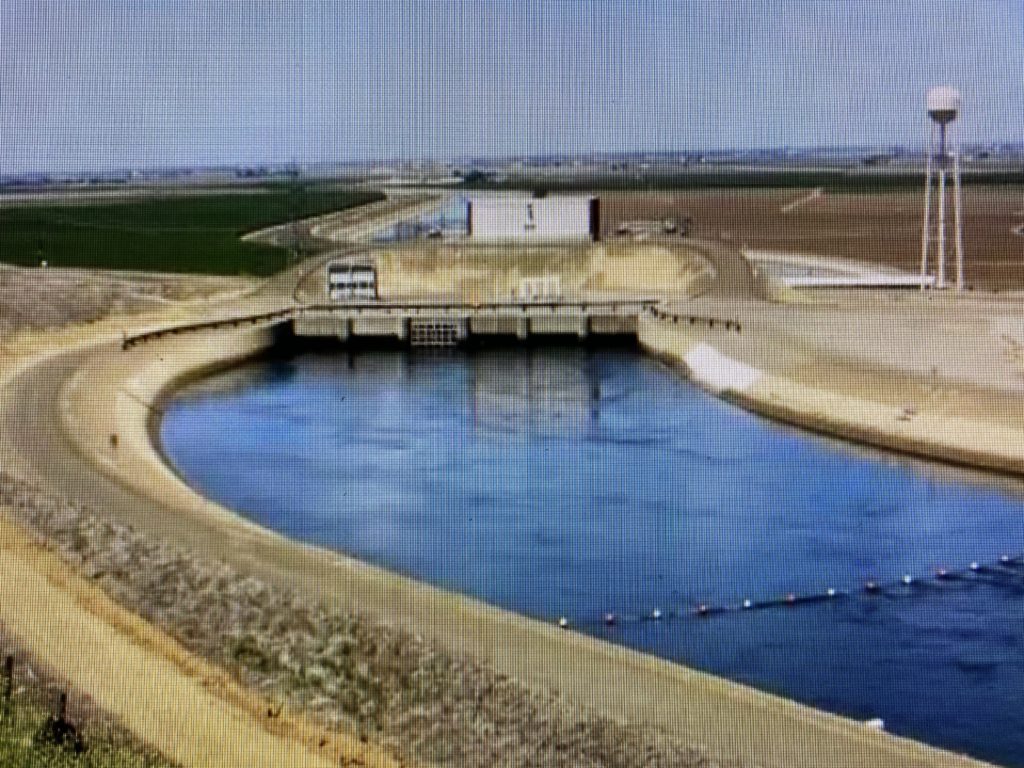
May 19, 2021Water transfers for irrigation become hot California commodity
With very little water to spare this drought year, water districts struggling with limited or no supplies look to their counterparts in other districts to negotiate water transfers to add whatever flexibility they can.
Districts on the west side of the Central Valley, both north and south of the Sacramento-San Joaquin Delta, face the prospect of receiving no water from the Central Valley Project (CVP).
“Water transfers are absolutely critical to preventing a disaster on the west side of the Sacramento Valley this year. Other than groundwater, it’s the only water many of our folks have,” said Jeffrey Sutton, general manager of the Tehama-Colusa Canal Authority (TCCA); the TCCA, a joint powers authority, serves 17 water districts in Tehama, Glenn, Colusa and Yolo counties.
“We’re probably purchasing somewhere in the neighborhood of 60,000 acre-feet of water collectively, just to prevent a disaster,” Sutton said.
The TCCA has water service contracts with the CVP and the U.S. Bureau of Reclamation, which operates the project. It started the irrigation season with an allocation of 5% of its contract quantity – later suspended due to ongoing dry conditions. That means the authority effectively has no CVP water allocation for the 150,000 acres it serves, Sutton said.
Farmers who have the ability to do so will rely on groundwater, he said.
“The other lifeline we have here is water transfers from senior water right holders on the Sacramento River,” Sutton said. “We are participating in a significant amount of transfers, some crop idling and pumping groundwater in lieu of surface water.”
An expanded drought declaration for 41 counties, announced this month by Gov. Gavin Newsom, intends to streamline and expedite the timeline for transfer approvals.
David Schaad, a farm manager and partner in a family farming business in Yolo County, grows rice and almonds and leases row-crop ground in the Dunnigan Water District, which receives irrigation water from the TCCA.
Schaad, who serves as president of the Dunnigan district board, said he plans to idle about 280 acres that would have been planted with rice. He said the district may benefit from purchased transfer water this season.
“We’ve been able to secure and purchase – and we hope that the water is there when we need it – an equivalent of about a third of what the district used last year,” he said, adding that the contracts would total about 4,500 acre-feet. “Growers within the water district would have to make up the difference with groundwater, if it’s available.”
The governor’s declaration also prioritizes transfers that store water for the cold-water pool behind Lake Shasta for fish species, and proposes a $200 million investment to restore conveyance facilities.
David Guy, president of the Northern California Water Association, said water transfers “could be really helpful for cold water pool management.”
Transfers, he said, “can also help other parts of the state that need water, and that includes, obviously, farmers.”
Guy said much transfer activity is being proposed on the Sacramento River, largely to the San Luis & Delta-Mendota Water Authority, which represents 27 water agencies on the west side of the San Joaquin Valley, plus San Benito and Santa Clara counties.
Scott Petersen, director of water policy for the SLDMWA, said the agency has been discussing transfers with Sacramento River senior water rights holders and that he expects transfers “will play a key role for communities throughout the San Joaquin, San Benito and Santa Clara valleys.”
“Many of the growers inside of our member agency service area are in a really dire situation,” Petersen said.
As in the western Sacramento Valley, water contractors in the SLDMWA service area have been told they have no access to a 5% allocation announced earlier in the year.
“Many of our growers definitely need water now,” Petersen said. “Folks are fallowing acreage, and we have some reports of people pulling out orchards already.”
He said the SLDMWA is negotiating contracts with the Sacramento River Settlement Contractors. The purchased transfer water would be moved later in the year, and the water price would be almost double what it was last year, about $575 an acre-foot.
The governor’s drought declaration, Petersen said, contains positive attributes such as the streamlining of transfers and investments in water infrastructure. But, he added, the declaration also grants additional authority to the State Water Resources Control Board that “could have pretty significant implications on the availability of water, depending on what conditions may be imposed on the operations of the projects.”
Petersen said he anticipates “quite a substantial amount of fallowing” of farmland in the western San Joaquin Valley.
“At the height of the 2014-15 drought, there was upwards of 500,000 to 550,000 acres that were fallowed throughout California. I wouldn’t be particularly surprised to see numbers similar to that,” he said, adding that the severe shortages make implementing the Sustainable Groundwater Management Act more challenging.
“We should have already made investments in projects to build resilience to drought,” Petersen said. “That being said, we have an opportunity to invest in projects now. I believe there is a sense of urgency to finally move (large conveyance and storage projects) forward to minimize the impacts to communities, people and the environment.”
– Christine Souza, California Farm Bureau Federation









